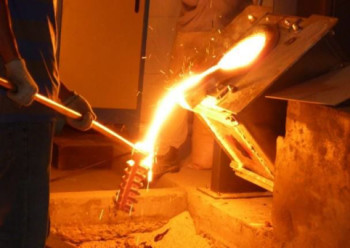
Investment casting is one of humanity’s oldest manufacturing technologies.
In fact, investment casting, which was first done with beeswax, has been creating like-items for more than 5,000 years. Over the course of the millennia, the evolution of casting has seen a number of marked improvements. New investment materials have been developed and more effective production methods have been introduced, giving the manufacturing method reach into a number of high-tech markets.
Though investment casting has been around a long time, it’s still developing. One of the most promising recent developments in casting has been the introduction of additive manufacturing (AM), which can build high-precision sand cores of complex geometries. This new method, known as binder jetting (which can be used to build with metal, carbon fiber and other materials), leverages highly granular material and a binding agent to create models.
How Binder Jetting Works
Binder jetting technology builds models by depositing a binding agent into a layer of powdered material. To construct artifacts, binder jetting systems lay down a layer of powder material (for castings this is typically a sand-based material) that is selectively impregnated with a binding agent adhering the granular substrate into a cohesive whole. After that step is complete, the process begins anew until the model is finished.
Additive Abilities in Investment Casting
Because binder jetting technology functions similar to a 2D ink-jetting process that employs extremely accurate deposition technology, features can be built with high resolution. When combined with finely granulated material, binder jetting can produce high-definition 3D models.
One of the attributes that make binder jetting attractive is its scalability. Because the system relies on binder deposition which can move quickly and work rapidly, the system can be used to build objects of large size rapidly.
Read more at ENGINEERING.com

